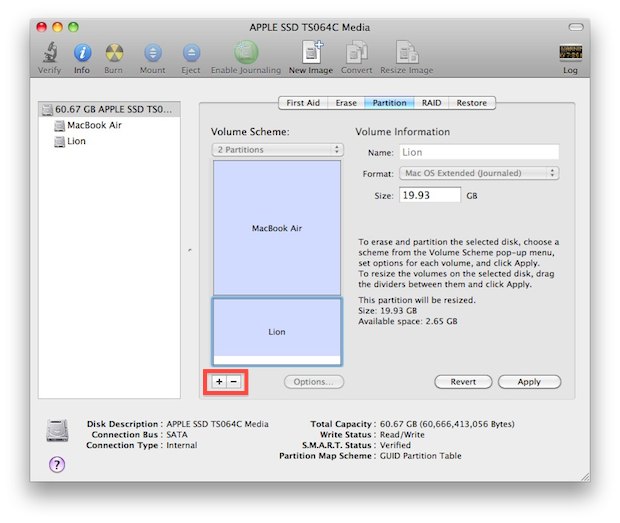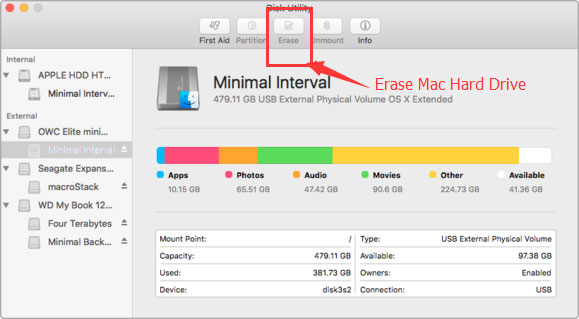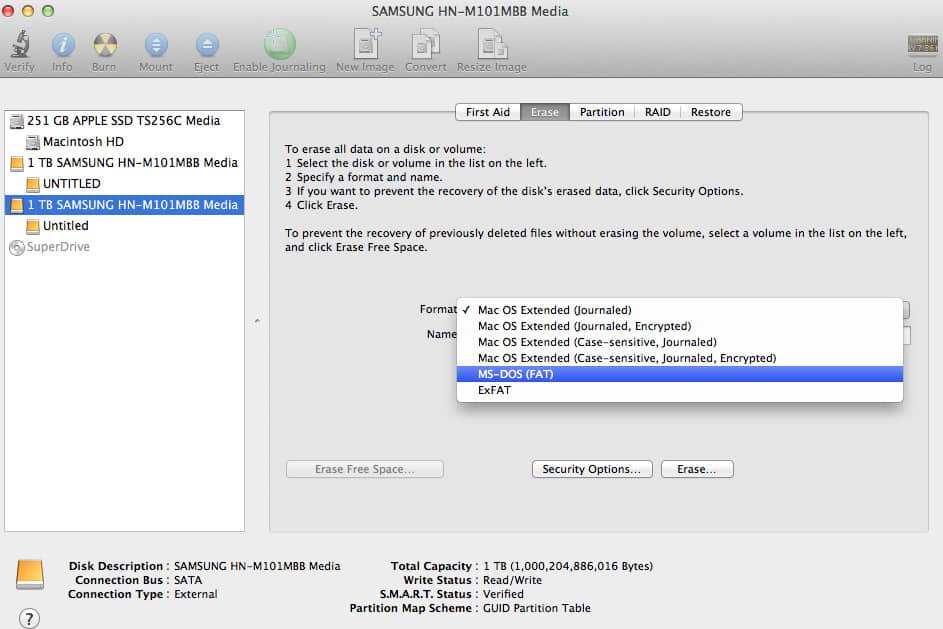
- Utility to format hard drive for mac os mac os#
- Utility to format hard drive for mac os drivers#
- Utility to format hard drive for mac os mac#
Select the hard drive in the left hand column and click on the Erase tab.ģ. Applications folder > Utilities folder > Disk Utility.
Utility to format hard drive for mac os mac#
After you plugin your new hard drive and attach it to your Mac via a FireWire cable, the hard drive will mount on your desktop.Ģ. If you are going to partition your new drive you can skip down to the Partition section below, as when you partition your hard drive, you will reformat the drive during the partition process.ġ.


When you are done, click on the 'Apply' button. Select each partition and then name and set the format. You can change the alloted size of the partitions by dragging the little button found between the the partitions in the Volume Scheme section, up or down, (red arrow below).

Utility to format hard drive for mac os mac os#
Select Mac OS Extended (No Journaling) for volumes that will be used as media or data storage drives. You'll want Mac OS Extended (Journaled) for a partition that you will want to serve as a boot (start-up) volume. Name your partition and then select your format. When a partition is selected, as noted by the blue bounding box, (red arrow below), you will notice that both Name and Format, (red box below) have now become available for this partition. Once you have set the number of partitions in the Volume Scheme' drop-down, select one of the partitions. As shown below, I have selected 2 partitions. In the Partition tab select the number of partitions that you want from the 'Volume Scheme' drop-down menu. Unless you have a specific need for OS 9 drivers, leave this box unchecked.
Utility to format hard drive for mac os drivers#
Also note that the "Mac OS 9 Drivers Installed" box is checked. These option will become available once we have set the new partition scheme. This is because the drive that I have selected has already been named and formatted and is currently in use. You will note that both the Name and Format sections are grayed out, (red box below). In the Partition tab, my Disk Utility is shown below. Once you have select a hard drive to partition, the Partition tab will now appear along with the other tabs near the top of the window, (red box below). Select the hard drive that you wish to partition in the left hand column. If you will look at the tabs near the top of the Disk Utility window (red box below), you will notice that the tab 'Partitioning' is not available as it was in Tiger. When you launch Disk Utility in Leopard, it opens in default, with no drives selected in the left hand column. However, the Disk Utility interface has change a bit from Tiger to Leopard. The process of formatting and/or partitioning a hard drive is exactly the same for both Tiger and Leopard. If your new hard drive is FireWire and you intend to use it with both Macs and PCs, then leave it as is and do not reformat. whether you intend to partition your hard drive or not, you really should reformat your new hard drive for the Mac.

Capturing clips longer than 9 minutes could result in the captured clip being broken into separate files. 2 gigs is good for about 9 minutes of DV capture. Using the drive for FCP (and encoded files for DVD SP) could cause problems. It is possible that your new cross platform hard drive could have a 2 gig file size limit. This is true, but because the drive is formatted for cross platform compatibility, some stability and facility issues could arise. When you purchase a new hard drive for your Mac, either SATA/ATA (internal) or FireWire (external) the box that the drive comes in will likely tell you that the drive will run on both Macs and PCs. With FireWire external hard drives reaching one Terabyte in size, partitioning the drive can make project and file management much more manageable. I typically partition into two volumes, one for FCP Captured media, the second for DVD SP projects, for Builds and MPEG 2 encoded files. Partitioning can be used for organization purposes, i.e., each volume could be used as a media (scratch) drive, each for a different FCP Project. With hard drives getting bigger there are reasons why you might want to partition a hard drive. You can create up to 16 different partitions on a hard drive, each one can be of different size and format, even including the 'MS-DOS' format for use with PCs on a network. Partitioning a hard drive is the process of dividing a hard drive into separate, discrete sections, called 'volumes'. Formatting & Partitioning a Hard Drive in OS Xįormatting & Partitioning a Hard Drive in OS X - Tiger and Leopard


 0 kommentar(er)
0 kommentar(er)
